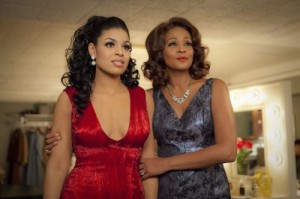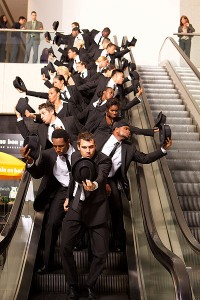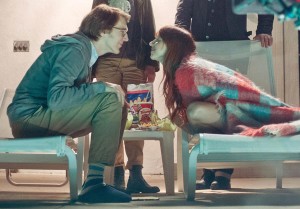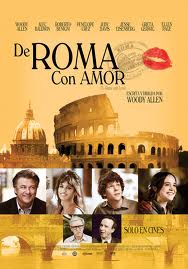Sparkle
Posted on August 16, 2012 at 10:28 pm
 You can’t help wondering what Whitney Houston was thinking when she decided to co-produce and star in the remake of a flawed but beloved 1976 musical melodrama
You can’t help wondering what Whitney Houston was thinking when she decided to co-produce and star in the remake of a flawed but beloved 1976 musical melodrama about a singer who becomes involved with an abusive performer and becomes addicted to drugs. Was this a cautionary tale? A reflection on her own choices? In this movie she plays Emma, the very strict mother of three musical daughters, living in 1968 Detroit. She is determined that her daughters will adhere only to the three priorities she drills into them: respect, education, and having a relationship with the Lord.
Emma once tried to make it as a singer herself and is determined that her girls will not suffer the heartbreak she experienced. But her youngest daughter, Sparkle (“American Idol’s” youngest-ever champion Jordin Sparks) wants to writes songs, and she wants to be a star. She does not have the stage presence of her sultry oldest sister, Tammy, known to everyone as Sister (an electrifying Carmen Ejogo) and is too timid to tell the truth about her feelings in her lyrics. The third sister, Dolores (Tika Sumpter), just wants to go to medical school. She agrees to sing Sparkle’s songs so she can get money for school and Sister agrees because she likes the money and excitement.
They sneak out at night to perform so their mother does not know. Their manager is the poor but ambitious Stix (Derek Luke), whose cousin Levi is in love with Sister. But Sister wants money and excitement. She agrees to marry Satin (Mike Epps), a comedian who specializes in the kind of racial humor that makes white audiences feel comfortable. Emma throws them out. The trio becomes more and more successful, but Sister’s life with Satin is filled with domestic abuse and cocaine and she resists her sisters’ efforts to help her.
Some intriguing themes about the racial conflicts of the era are raised almost in passing and never developed while the soapy parts of the story drag on and the storyline loses any pretense of believability. Sparks is not an actress, and Houston spends most of the movie giving that “Hell to the no” look we saw too often in her reality show. Ejogo is a sensation and Luke continues to be one of Hollywood’s overlooked treasures, bringing a dignity and sweetness to the role. Epps is excellent, showing us Satin’s volatility and magnetism. The musical numbers raise the roof, especially the cover of the earlier film’s biggest hit, “Giving Him Something He Can Feel” (later covered by En Vogue) and Sparks’ rousing finale. But the highlight is Houston’s passionate “His Eye is on the Sparrow,” a powerful spirit-lifter and a sad reminder of her once-to-a-century gifts.
Parents should know that this film includes a scuffle, domestic abuse, characters who are injured and one killed, tense emotional confrontations, sexual references including teen pregnancy and non-explicit situations, some strong language including ugly racial epithets, smoking, drinking, and drug use.
Family discussion: Why did the three girls have such different ideas about what they wanted? Why was their mother so strict? Why did Sister tell the other two they had to leave her house?
If you like this, try: the original Sparkle with Lonette McKee and Irene Cara, “Dreamgirls,” and “Grace of My Heart”




